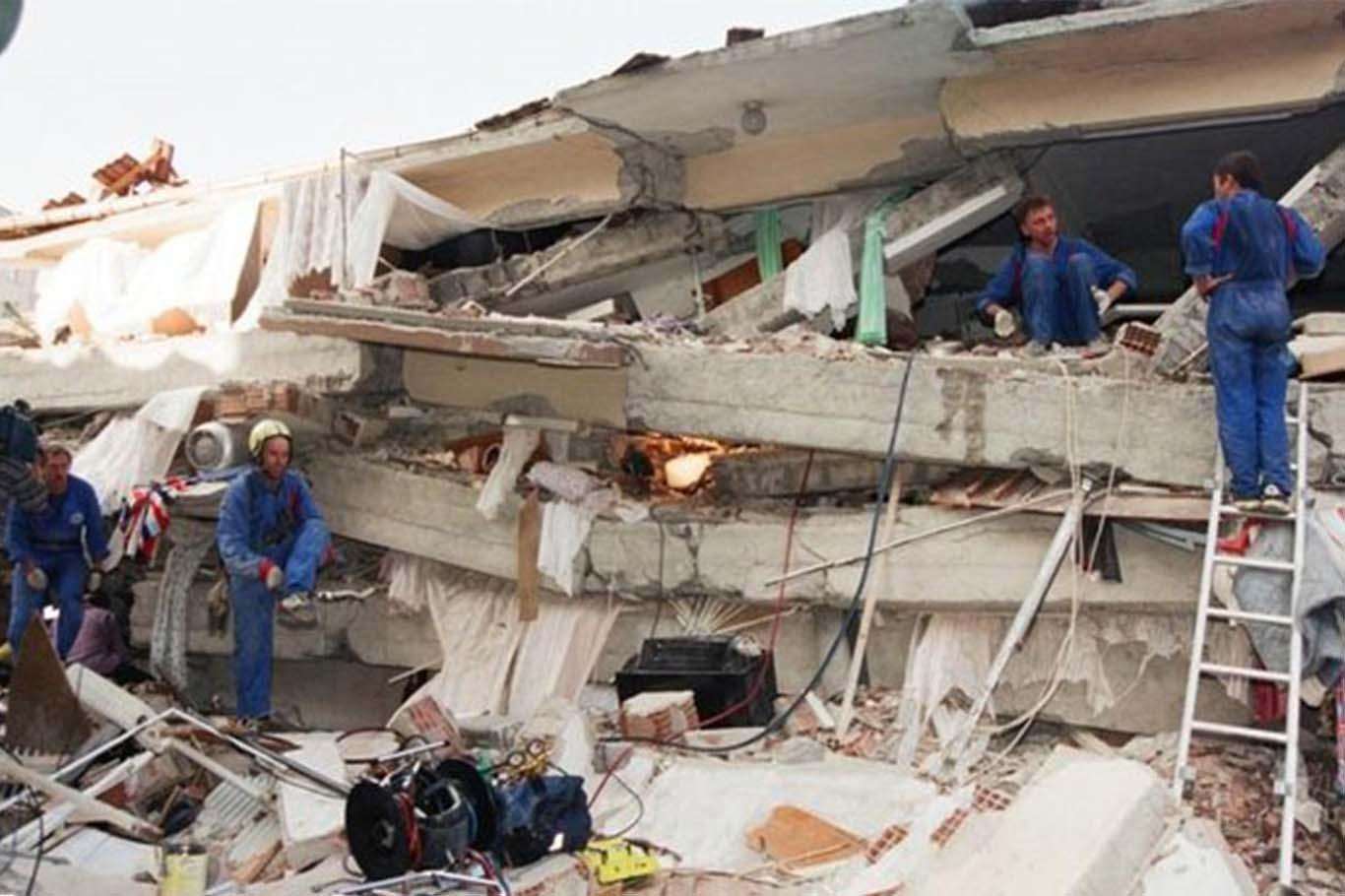Today marks the 21st anniversary of Marmara Earthquake


It has been 21 years since the Marmara earthquake, which took place on 17 August at 03:01:40 local time in northwestern Turkey, killing at least 17,000 people.
The 1999 Marmara earthquake had a moment magnitude of 7.6 and a maximum Mercalli intensity of IX (Violent). The event lasted for 37 seconds, killing around 17,000 people and left more than 250,000 people homeless. The nearby city of İzmit was severely damaged.
The earthquake occurred along the western portion of the North Anatolian Fault Zone (NAFZ). The Anatolian Plate, which consists primarily of Turkey, is being pushed west about 2–2.5 cm (0.8–1.0 in) a year, as it is squeezed between the Eurasian Plate to the north and the Arabian Plate to the south. Major earthquakes in Turkey result mainly from slip along the NAFZ or the East Anatolian Fault.
The Marmara earthquake had a rupture length of 150 kilometers (93 mi) extending from the city of Düzce all the way into the Sea of Marmara along the Gulf of İzmit. Offsets along the rupture were as large as 5.7 meters (18.7 ft).
Destruction in Istanbul was concentrated in the Avcılar district to the west of the city. Avcılar was built on relatively weak ground mainly composed of poorly consolidated Cenozoic sedimentary rocks, which makes this district vulnerable to any earthquake.
Damage from the Marmara earthquake
The earthquake was heavily felt in this industrialized and densely populated urban area of the country, including oil refineries, several automotive plants, and the Turkish navy headquarters and arsenal in Gölcük, increasing the severity of the loss of life and property. The earthquake also caused considerable damage in Istanbul, about 70 kilometers (43 mi) away from the earthquake's epicenter.
An official Turkish estimate of October 19, 1999, placed the toll at 17,127 killed and 43,959 injured, but many sources suggest the actual figure may have been closer to 45,000 dead and a similar number injured.
Reports from September 1999 show that 120,000 poorly engineered houses were damaged beyond repair and approximately 20,000 buildings collapsed, resulting in more than 250,000 people becoming homeless after the earthquake.
There was extensive damage to several bridges and other structures on the Trans-European Motorway (European route E80), including 20 viaducts, 5 tunnels, and some overpasses. Damage ranged from spalling concrete to total deck collapse. The earthquake sparked a disastrous fire at the Tüpraş petroleum refinery. The fire began at a state-owned tank farm and was initiated by naphtha that had sloshed out of a holding tank. Breakage in water pipelines, results of the quake, nullified attempts at extinguishing the fire. Aircraft were called in to douse the flames with foam. The fire spread over the next few days, warranting the evacuation of the area within three miles of the refinery. The fire was declared under control five days later after claiming at least seventeen tanks and untold amounts of complex piping.
The earthquake caused a tsunami in the Sea of Marmara that was about 2.5 meters high. The tsunami caused the deaths of 155 people.
A massive international response was mounted to assist in digging for survivors and assisting the wounded and homeless. Rescue teams were dispatched within 24–48 hours of the disaster, and the assistance to the survivors was channeled through NGOs and the Red Crescent and local search and rescue organizations. (ILKHA)
LEGAL WARNING: All rights of the published news, photos and videos are reserved by İlke Haber Ajansı Basın Yayın San. Trade A.Ş. Under no circumstances can all or part of the news, photos and videos be used without a written contract or subscription.
On November 2, 1917, British Foreign Secretary Arthur James Balfour sent a short letter to Zionist leader Lord Rothschild, pledging Britain’s support for a Jewish homeland in Palestine.
One year has passed since Yahya Sinwar, the legendary leader of Hamas in the Gaza Strip, was martyred in a direct confrontation with Israeli forces in Rafah.
Two years have passed since the morning that forever altered the course of the Palestinian struggle — the dawn of October 7, 2023, when the besieged enclave of Gaza broke through its prison walls in a thunderous uprising now etched into history as Operation Al-Aqsa Flood.
Two years after October 7, 2023, the Gaza Strip stands as a scar on the conscience of humanity — a living graveyard of shattered lives, silenced voices, and enduring resistance.